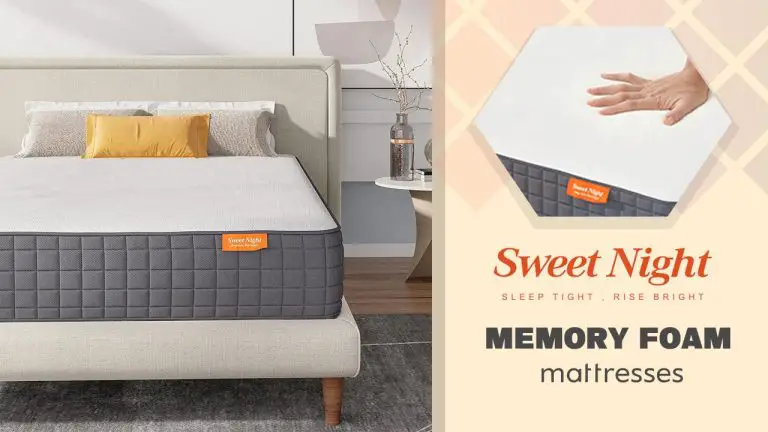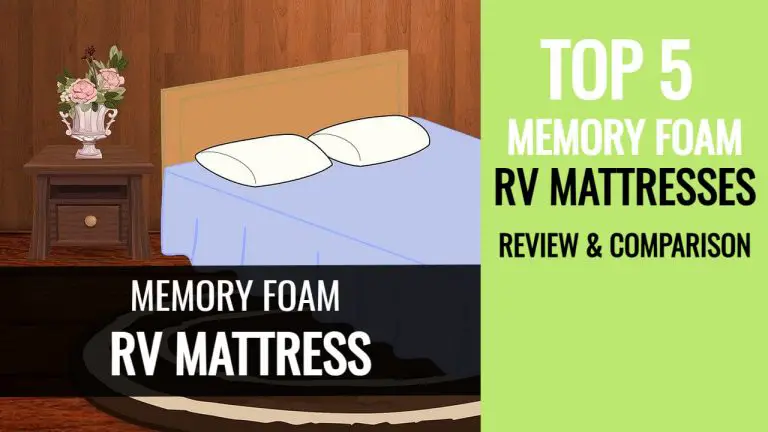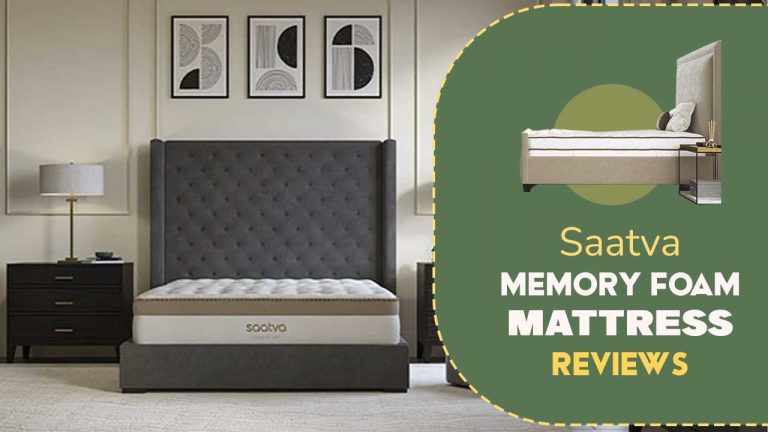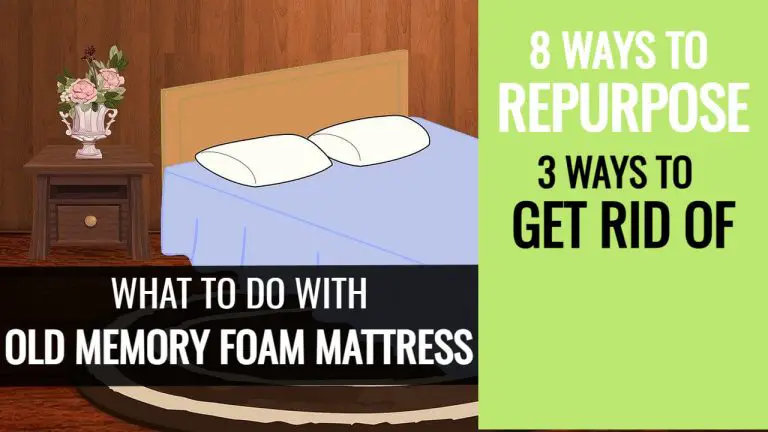How To Keep Sheets On Memory Foam Mattress? Do You Need Special Sheets?
Memory foam mattresses adjust to your weight and body shape and provide a cushioning surface that ensures better sleep. However, since memory foam softens with heat, it may cause sweating. The right bedsheet can reduce this discomfort to a great extent.
Moreover, when your mattress is tailor-made to suit your needs, why not your bedsheet? Here is a comprehensive guide to choosing the best bedsheet for your memory foam mattress.
Many people complain that the sheets won’t stay on their mattress! Well! These tips and tricks will help solve this issue as well! Here we go!
Why Do Memory Foam Mattress Sheets Don’t Stay?
Do you often wake up during the night with your sheets tangled around your legs? Is your bed a complete mess in the morning? Well! You are probably using the wrong-sized bed sheet.
Another common reason behind the sheets not staying on the mattress is the material your bedsheet is made up of. Some materials are pretty slippery and get crumpled easily.
Check the thickness of the mattress before buying the sheets. If the bed sheet does not have deep pockets, it will come out quickly from the sides.
Do You Need Special Sheets for A Memory Foam Mattress?
Although there are no special sheets for a memory foam mattress, specific considerations should be kept in mind while buying bed sheets for your memory foam mattress. Look for a good sheet that has the following:
- Sheets that are light weight and more breathable
- Preferable having a matte touch
- Tend to be thicker
- Compatible with the height of mattress
What Sheets Do You Use on A Memory Foam Mattress?
A perfect memory foam mattress sheet should have features that allow the conduction of heat from the bed to the sleeper’s body and vice versa. Those sheets need to give more room for contractions and expansions.
Here are a few features that you should keep in mind while buying the best bed sheets for your memory foam mattress:
- Thread count
- Fabric
- Type of weave on the material
1. Thread Count
We usually do not give much thought to shopping for bedsheets. Thread count denotes the number of threads that make up one sq. inch of fabric/material.
The higher the number of threads, the denser the thread count. Higher thread-count sheets are not as breathable as those with a lower thread count.
Memory foam mattresses are known to trap heat because of the viscoelastic material of the mattress; therefore, bedsheets with a higher thread count can make your memory foam mattress quite uncomfortable.
If you have a memory foam mattress, a bedsheet with a thread count of a minimum of 200 is ideal for a comfortable sleeping experience.
2. Fabric
Natural fabrics or synthetics? You wonder about this when you go shopping for new bedsheets. Although manufacturers may indicate that a particular polyester or synthetic bedsheet allows better airflow, they cannot compete with natural fabrics.
Synthetic fibers usually contain petroleum products or certain other materials that make them less breathable.
Besides, synthetic material keeps you warm, and it can be a little too hot on a memory foam mattress which already traps a lot of heat.
Natural materials such as cotton, linen, silk, and hemp are the best for bedsheets as they disperse heat well. However, these materials are quite expensive as compared to synthetic ones.
For example, bed sheets made from pure mulberry silk with a momme weight (the pound weight in a 100-yard-by-45 inch wide piece of silk) of at least 19, cost you at least three and even up to seven times from high thread count Egyptian cotton sheets.
Alternatively, you can use a poly-cotton blend with about 30% polyester, which is much better than synthetic material and is considerably cheaper than pure cotton or silk.
3. Material Weave
The breathability and cost of the bedsheet are also determined based on how threads are woven. Some weaves result in tightly woven fabrics, which trap body heat and reduce airflow.
Sheets having tighter weaves are usually preferred in places with a colder climate. Conversely, sheets loosely woven fibers increase air circulation and cooling sensation.
They are preferred in summers and areas that remain warm throughout the year. Two main types of weaves are percale and Sateen.
Egyptian cotton comes from the native North American cotton plant and is used in making luxury bedding products around the world. Great Egyptian cotton fibers are woven to produce:
Percale has a loosely woven weave that allows better airflow and is thus ideal for warm places and can be used all year round.
On the other hand, Sateen feels smooth and luxurious and is suitable for winters and cold climates. We can say that both go well with a memory foam mattress, and ultimately it is a matter of personal preference.
How To Keep Sheets On A Memory Foam Mattress?
Don’t worry if your sheets never stay in place! Here are a few DIY ideas that will solve your problem and help you enjoy a cozy and restful sleep.
1. Fasten with Sheet suspenders
These small gadgets might be what you need to keep your sheets smooth and wrinkle-free. Clip these suspenders on the corners of your fitted sheets and slip them around the edges.
These suspenders tug on the sheets, and no matter how much you toss or turn, your sheet will always remain in place. What’s more, they are quite cheap and solve your purpose too!
2. Rubber Bands
Get a set of giant rubber bands to hold your sheets in place. Do you think this is a joke? Well! No! These gigantic rubber bands are fastened around the mattress so that the locking mechanism faces outside.
Once the rubber band is secured around the mattress, attach your fitted sheet, pull the locks up and fasten the sheet in place. Simple, isn’t it!
3. Non-slip Rug Corners
Non-slip rug undersides are designed to grip whatever surface they are used on. Place these underneath your sheet on each corner to keep your sheet in place for a longer time.
4. Place a Rough Under sheet beneath your fitted sheet
The basic idea here is to increase the friction between the mattress and the sheet. Placing a rough-textured sheet under your regular sheet prevents the sheet from crumpling.
The only problem here is that the extra sheet might increase the heat output at night, creating discomfort.
5. Straps
Bed fitted sheet holder can be another option to end your frustration, twisting and turning, and wrestling with fitted sheets.
Bedsheet straps are the bed sheet holder and flat-to-fitted sheet converter that fixes your short, loose, or stubborn bedsheets like a hotel bed.
If you are just not in the mood to shop for any of the products, you can always sew up some elastic straps to the corner of your sheet and use them as the suspenders. The sense of accomplishment that you get will make you sleep like a baby!
6. Choose the Right Fit
Many people buy incorrect sizes while shopping for sheets. This might be due to ignorance or accidental. In either case, it can turn your sleep into a nightmare!
It is better to be well-informed about your bed and mattress specifications and look for the correct size of the sheet. This will save you from the hassles of unruly bedsheets.
If your mattress is extra thick, look for sheets with deep side pockets. Deep pocket sheets are suited to fit all types of mattresses with 18, 20, 22, and 24 inches deep pockets.
They are made with stretchable elastic that allows the sheets to fully reach around the foam mattress, ensuring the sheets don’t pop off the bed in your sleep.
Final Words:
Bed linen is a crucial element to a good night’s sleep. A restful sleep dramatically depends on the quality of your mattress as well as the bedsheet.
Therefore, It is essential that we buy bedsheets that are comfortable and enhance the room décor and elevate its ambiance. Natural fibers like bamboo, cotton, and linen are breathable fabrics that wick away sweat.
Materials with a thread count of 200 to 400 feel smooth and cool, and suitable for most people. Eventually, it depends on your taste and preference. Lay the fabric against your skin and choose the one that feels comfortable and looks good!








